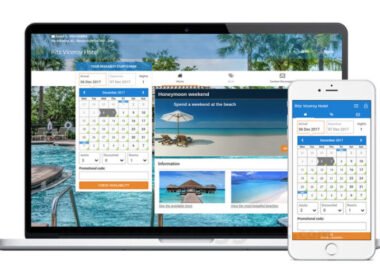Do you ever wonder how to get the most out of your money in college or early adulthood? Managing finances can feel overwhelming when you’re just starting to earn, save, and plan for the future. The key lies in creating a solid banking strategy that aligns with your goals. Whether you need quick access to funds or want to grow your savings, understanding the balance between a checking vs savings account can make all the difference. By building healthy financial habits now, you set yourself up for long-term stability and success.
Know the Purpose of Each Account
When designing your banking strategy, it’s essential to understand what checking and savings accounts are meant for. Checking accounts is your go-to option for daily transactions, such as paying bills, shopping, or withdrawing cash. They offer easy access but usually come with little or no interest on the balance. On the other hand, savings accounts are designed to help you grow your money over time, thanks to the interest they earn. Although not ideal for frequent transactions, savings accounts are perfect for building an emergency fund or achieving specific financial goals. Recognizing the unique role of each account helps you use them effectively.
Balance Accessibility and Growth
A smart banking strategy requires balancing the accessibility of a checking account with the growth potential of a savings account. Keep enough money in your checking account to cover regular expenses and unexpected costs, like repairs or medical bills. For anything beyond that, transfer your extra funds to your savings account. This way, your money isn’t idle, and you’re less tempted to overspend. Setting up automatic transfers from checking to savings can also ensure consistent saving habits without extra effort.
How to Use a Checking vs Savings Account to Build Good Habits?
Building healthy financial habits often starts with small, intentional steps. College students and young professionals, in particular, can benefit from prioritizing savings while still enjoying the flexibility of a checking account. For example, you might use your savings account to create a budget category for future goals, like a vacation or a car. On the other hand, your checking account can serve as a practical tool for tracking day-to-day expenses. Leveraging both accounts strategically allows you to manage spending while saving for what matters most.
Start Small and Stay Consistent
Many people feel they need large sums to start saving, but the truth is that even small amounts can add up over time. Setting aside $10 or $20 from each paycheck into your savings account may not seem like much at first, but over weeks and months, it becomes substantial. This approach works incredibly well for college students who might not have a steady income yet. Consistency, rather than the amount, is the key to building a strong financial foundation. Companies like Intuit can provide useful tools for tracking progress and making smarter money decisions.
Review and Adjust Your Strategy Regularly
Life is constantly changing, and so should your banking strategy. Every few months, take a closer look at your financial habits to identify areas for improvement. Have your expenses increased? Are your savings goals still realistic? Periodic reviews help you stay on track and make necessary adjustments. If you dipped into your savings too often, consider keeping a higher balance in your checking account to avoid penalties or fees. Likewise, if your savings are growing steadily, explore additional options like certificates of deposit or investment accounts for even greater returns.
Crafting a banking strategy is about more than just choosing between a checking vs savings account—it’s about creating a system that works for your lifestyle and goals. By understanding the purpose of each account, balancing accessibility with growth, and building consistent habits, you can take control of your finances with confidence. Whether you’re a college student learning the ropes or an early career professional planning for the future, these steps set you on a path toward financial freedom. Start small, stay focused, and watch your savings grow.










